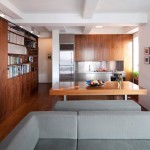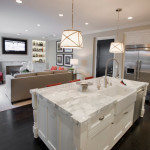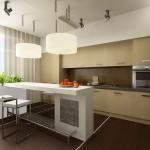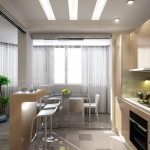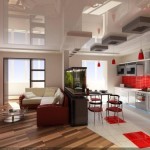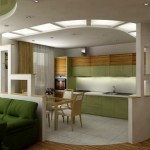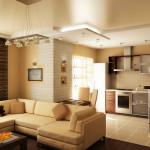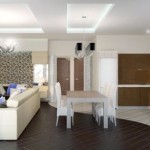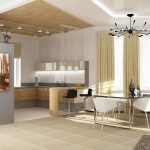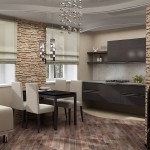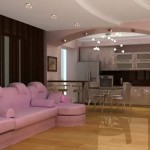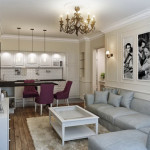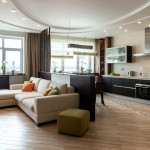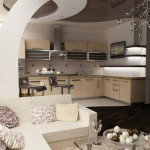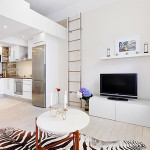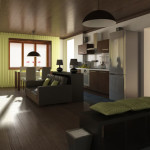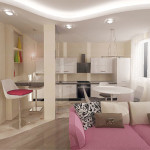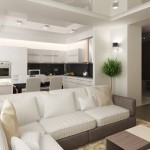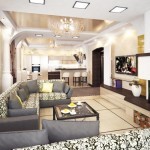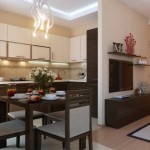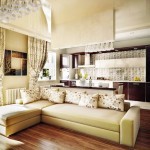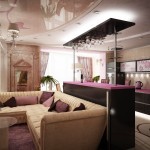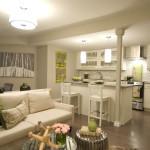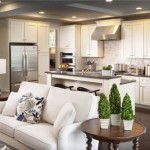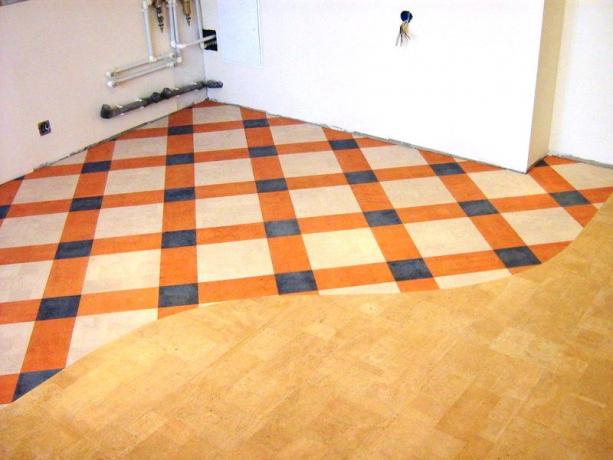Content
-
1 What for
- 1.1 To start
- 1.2 Design solutions
- 2 Finally
There is no reliable information about who first came up with the idea to combine the kitchen and living room, but this idea cannot be called innovative. Moreover, such a combination is quite common in modern buildings and in the heritage of our recent past, Khrushchev and Brezhnev houses.
But before we delve into the secrets of design skill and reflect on the benefits of this or that solution, let's answer one question.

And how many options.
What for
Indeed, any event will only be as useful as possible when you know exactly what you want to get in the end. The decision of the owners of small apartments with micro-kitchens can be understood.
Judge for yourself, in a kitchen with a square footage of just over 6 meters it is very problematic to place all the furniture, household appliances, and even the whole family in order to eat. So the owners of these apartments are forced to resort to all sorts of tricks, including redevelopment.
Making a final decision requires a thorough study. For this purpose, this instruction has been compiled.
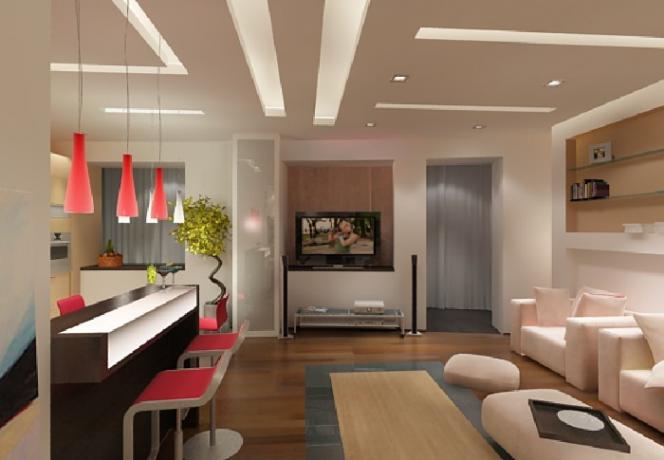
It's time to decide.
Read also the article "Kitchen combined with the living room: radical changes in the layout."
To start
And first, let's prepare the scales and weigh all the pros and cons of the upcoming combination.
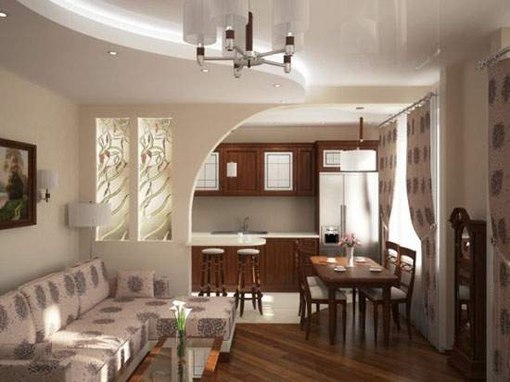
Let there be light.
Let's start with the pros:
- Visual and real expansion of space per housing unit;
- Increased illumination of the space;
On a note! There are design solutions in which one window, usually a kitchen window, is overlapped in order to gain space for built-in cabinets. In this case, the main load for lighting the kitchen area falls on additional sources of artificial lighting.
- The opportunity to gather at one table with the whole family;
- There is enough space in the kitchen area for cooking and serving it on the festive table, and also in order to speed up the cooking process, the ability to work in the kitchen with several people;
- No need to install an additional plasma panel in the kitchen, or other audio and video equipment.
The scales tilted uncontrollably under the weight of the positive.
Now about the cons, where to put them:
- No matter how hard the housewives try, different products have their own smell, and I must say, not always pleasant. And if somewhere, something went bad, well, no comment. Everything that happens in the kitchen will be felt in the living room;
- Appliances. Our irreplaceable assistants, in spite of all their frugality, low noise, etc., are still making noise. And at night their grumbling is heard even better. Imagine a washing machine installed with a delay, waking you up at five o'clock in the morning with the sound of a centrifuge running.
Important! There are household appliances, the presence of which in the residential area, I mean, in the sleeping area, is highly undesirable. This is due to the emission of certain waves that have an adverse effect on human health.
- The living room together with the kitchen have special ventilation requirements. If any type of hood can be used for an ordinary kitchen, then the living room and the kitchen together in an ultimatum form require supply and exhaust ventilation.
- One more thing. The fact that in an isolated kitchen could lie in the sink for hours without annoying or attracting anyone's attention will be striking in the combined space. And rest assured that this is what your guests will notice.

And smells cannot be avoided.
These are the arguments that we have prepared for you to make a decision. Take another look at the scales, and if you decide that a living room with a kitchen together is what you need, let's go further together.
Design solutions
Remember! In his apartment, everyone himself is the chief constructor, designer and creator. Therefore, all of the following material is advisory in nature, without claims to legislation and binding.

Everyone has their own taste, but they do not argue about them.
So let's continue. In modern design solutions, there is a technique called zoning.
Although visually everything is in a single space, the kitchen and living areas are still separated from each other:
- Ceiling structures. Typically plasterboard figures with built-in light sources. We have already mentioned some design developments in which the kitchen window is closed, while lighting sources are added.
Note! Work surfaces in the kitchen require good and bright lighting, so the light in this area should there are many, but in the recreation area a lot of unnecessary light sources can only cause unnecessary irritation.
- Floor selection. Floor marking can be done very simply by using different types of flooring for different areas. For example, tiles and laminate, or linoleum and parquet.
Advice! When decorating the floor with a single material, do not forget that the kitchen itself is more aggressive (due to high humidity, the possibility of exposure to various temperatures and their fluctuations, etc.), therefore, the wear of the material in the kitchen will occur faster than in the residential zone.
The entire coating is subject to replacement. Therefore, it is more acceptable to highlight the kitchen floor with tiles, rooms with laminate, parquet, or other convenient material.
Multilevel floors in zones are allowed, as in the next photo.

The living area level is higher than the kitchen area level.
- Selection with part of a wall. You can leave part of the wall to highlight areas, sometimes combined solutions are used in the form of a bar counter on a fragment of the wall.
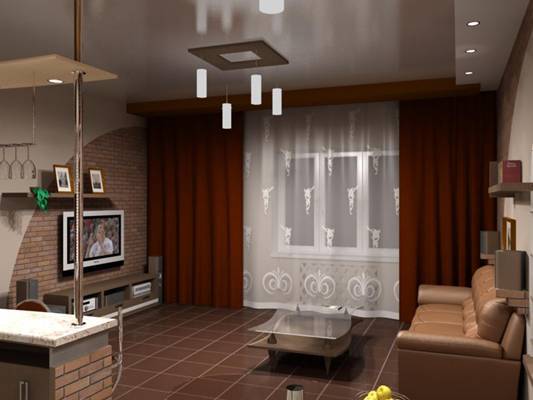
Bar counter on a fragment of the wall, a valid option.
- Allocation of zones using lightweight partitions. This includes screens, sliding lightweight structures, vertical and horizontal blinds. This technique looks especially effective when decorating a room in an oriental style.
And by the way! Remember the dirty dishes in the sink? This is where the screen comes in handy.
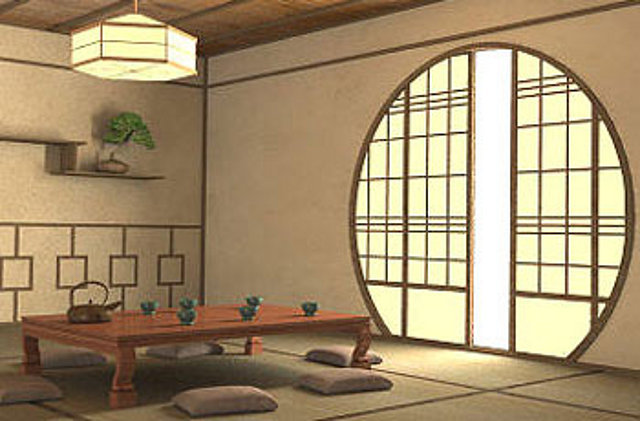
Decorations in oriental style.
- Highlighting zones using pieces of furniture. This includes a sofa, an armchair-bed, and a dining table, but you never know what object can limit the kitchen area.
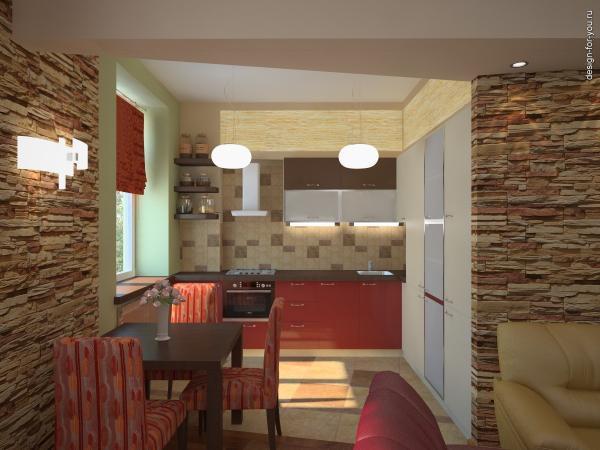
It is quite possible to do this with a table.
And more about the advantages of highlighting zones using pieces of furniture:
- This is usually done by hand;
- Having several objects, you can rearrange as much as you like;
- The price of this innovation is a few minutes of your free time.
Read also an article on the design of a kitchen combined with a living room.
Finally
Once again, having carefully weighed everything, you will probably make a certain decision. Our video will give this material the color that will help you navigate such a difficult issue.
The interior of the kitchen, living room - see here.
